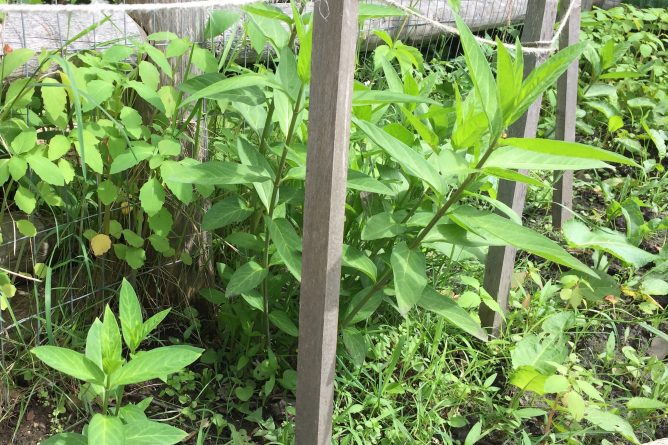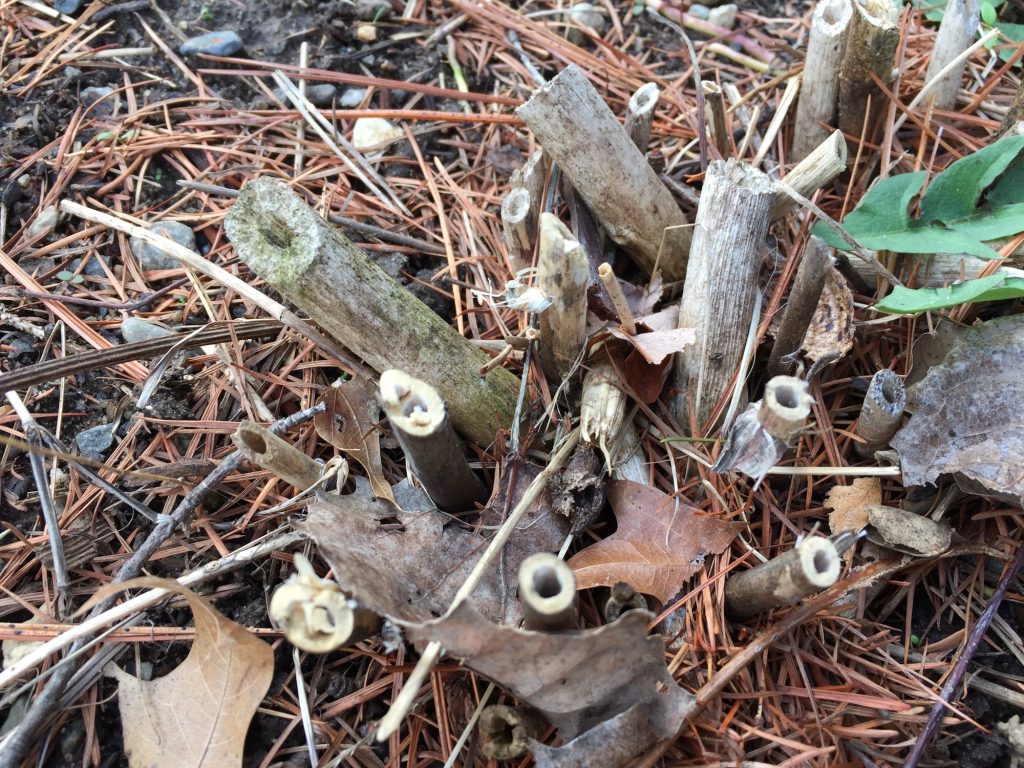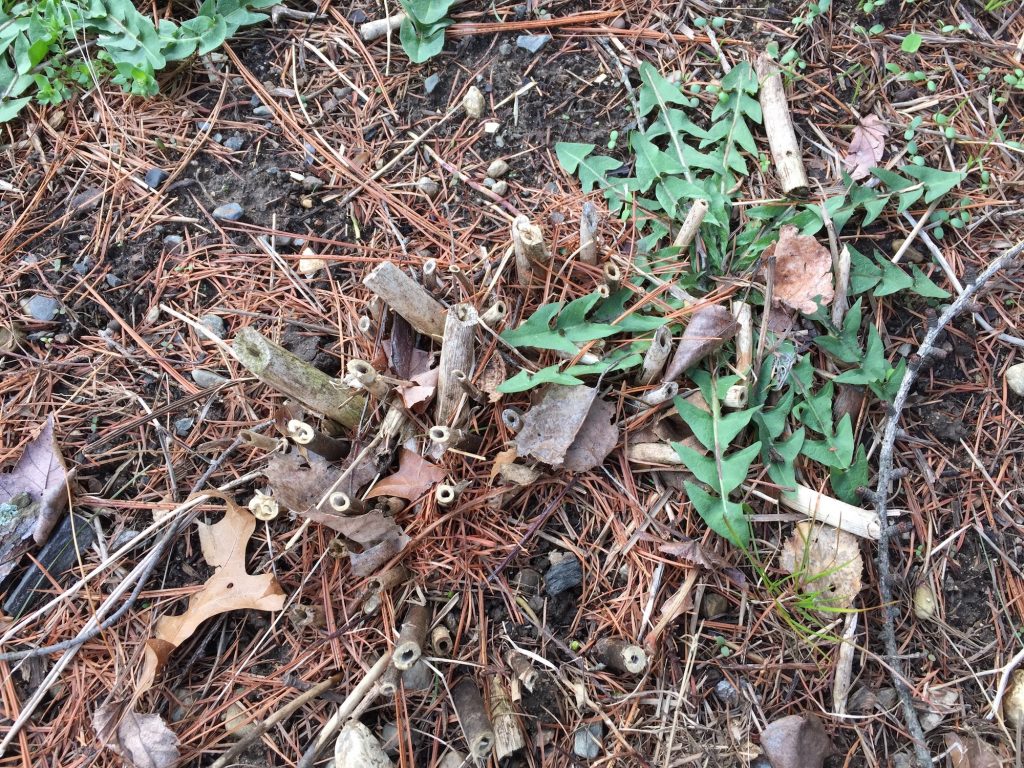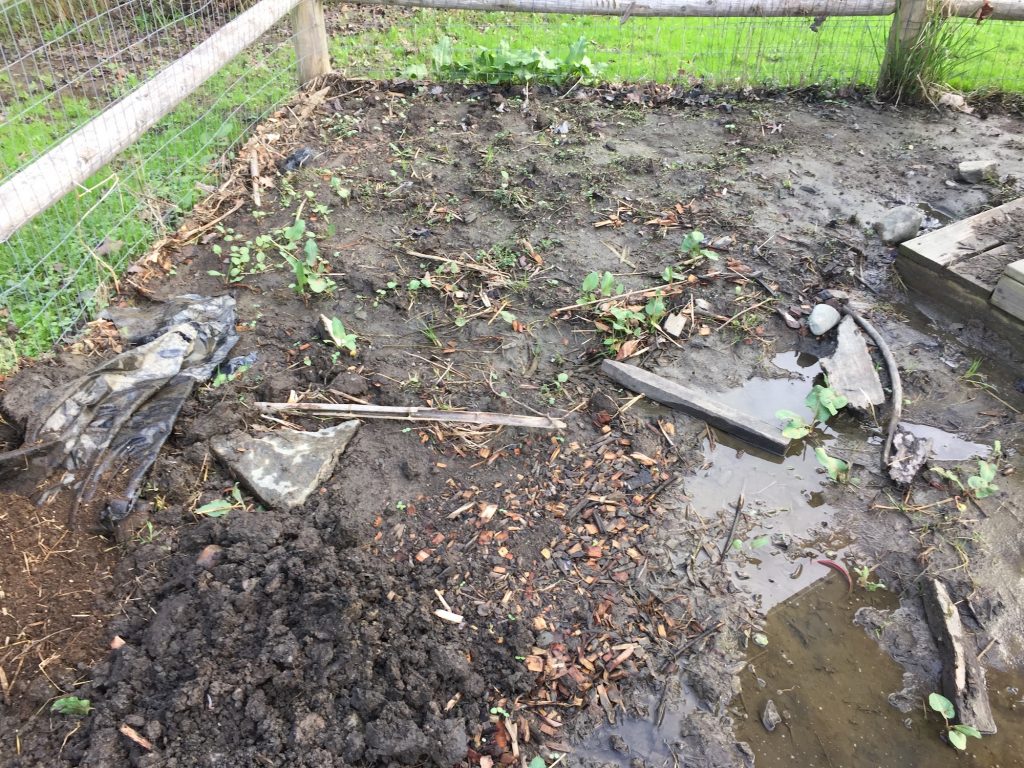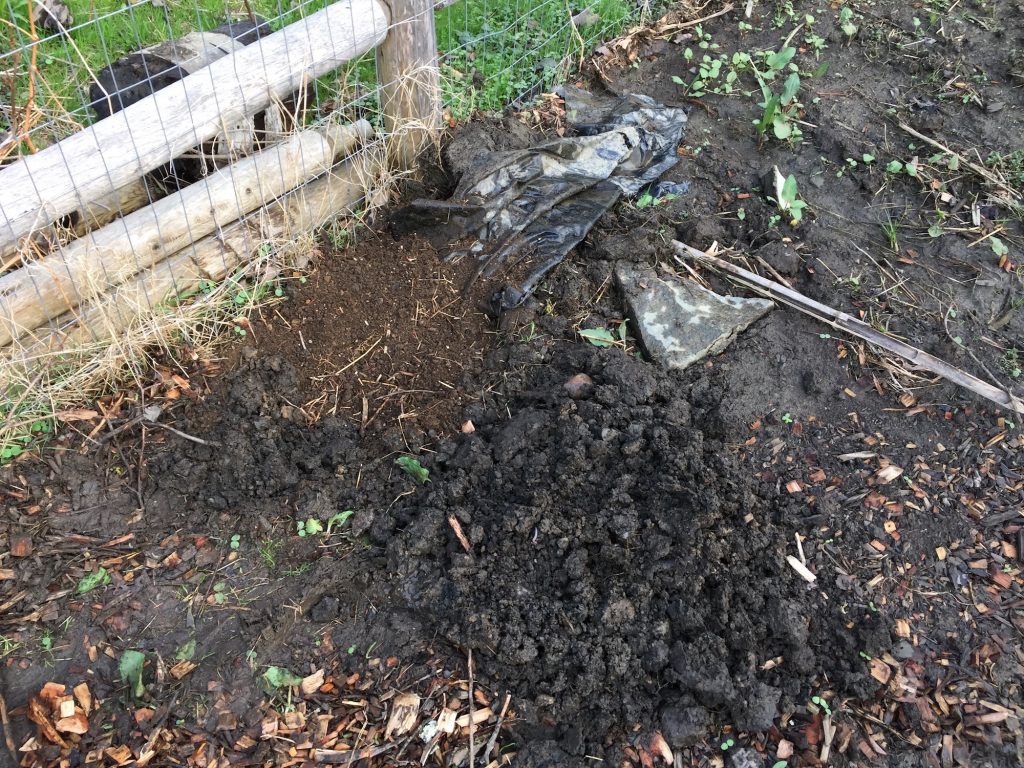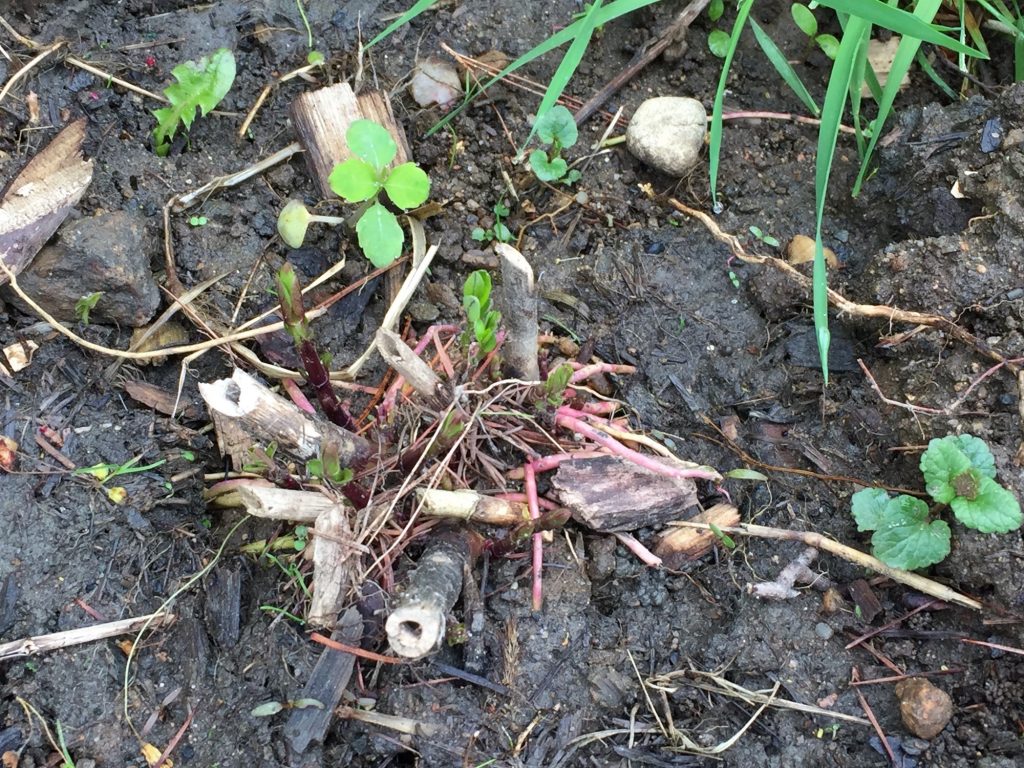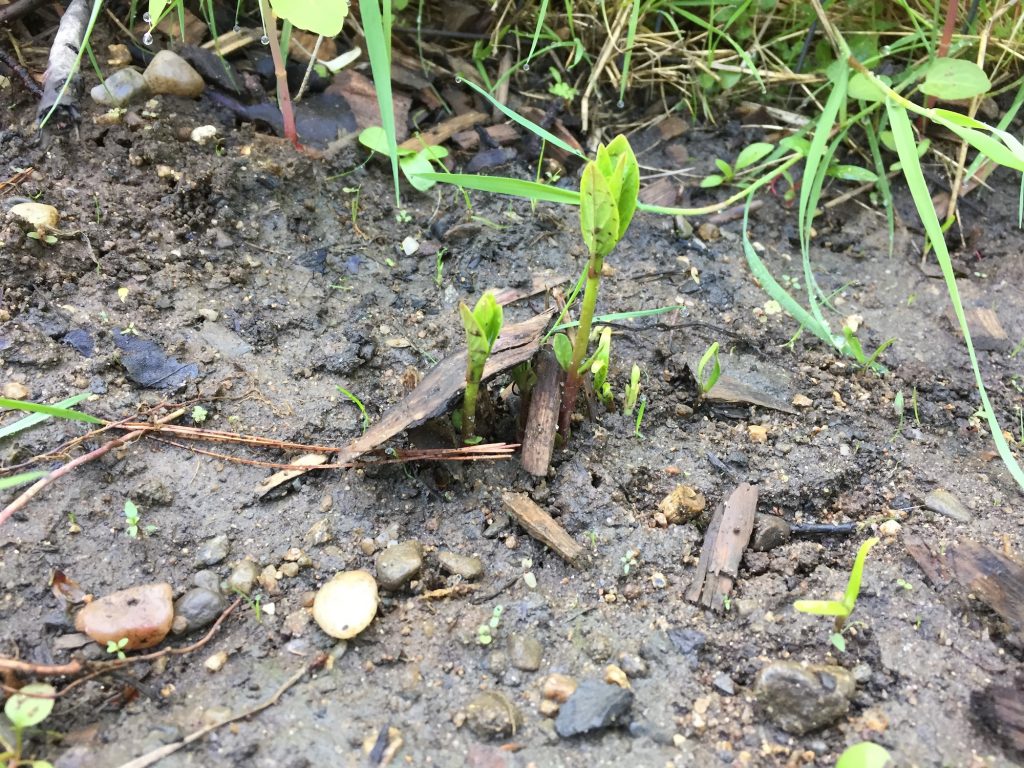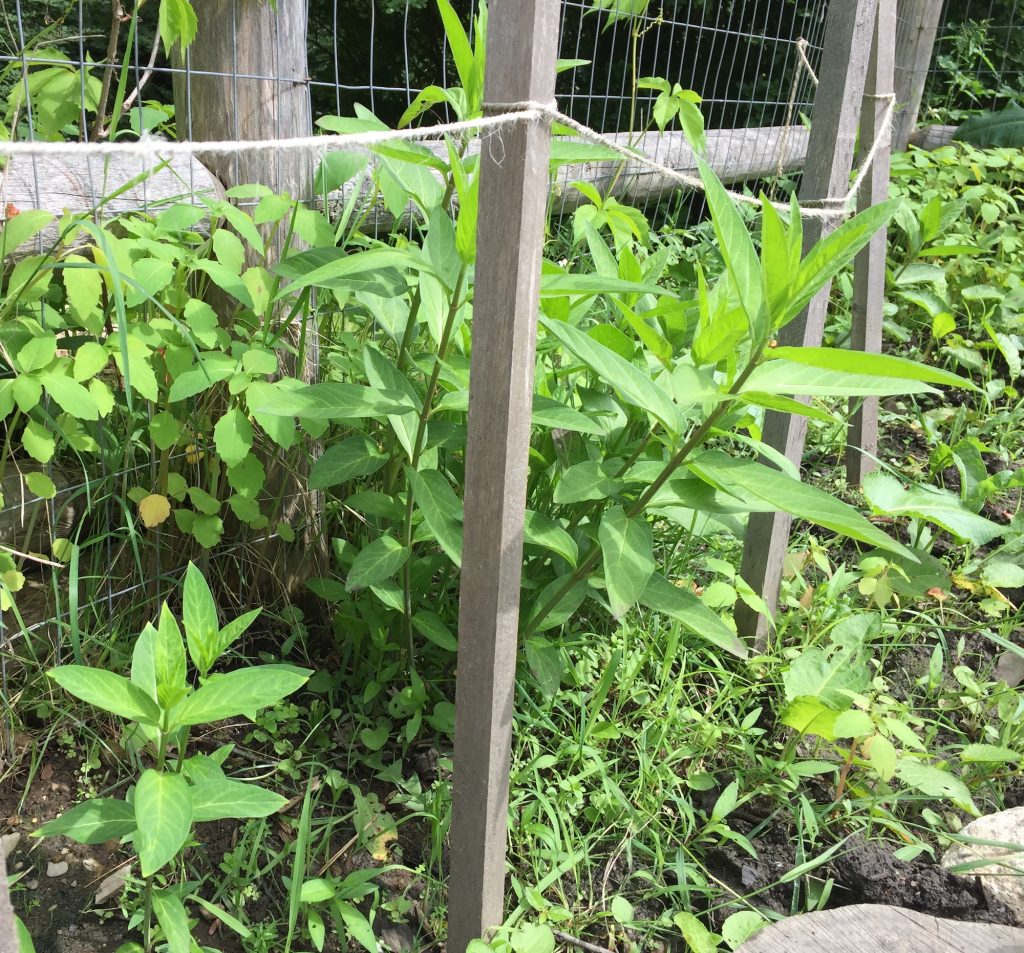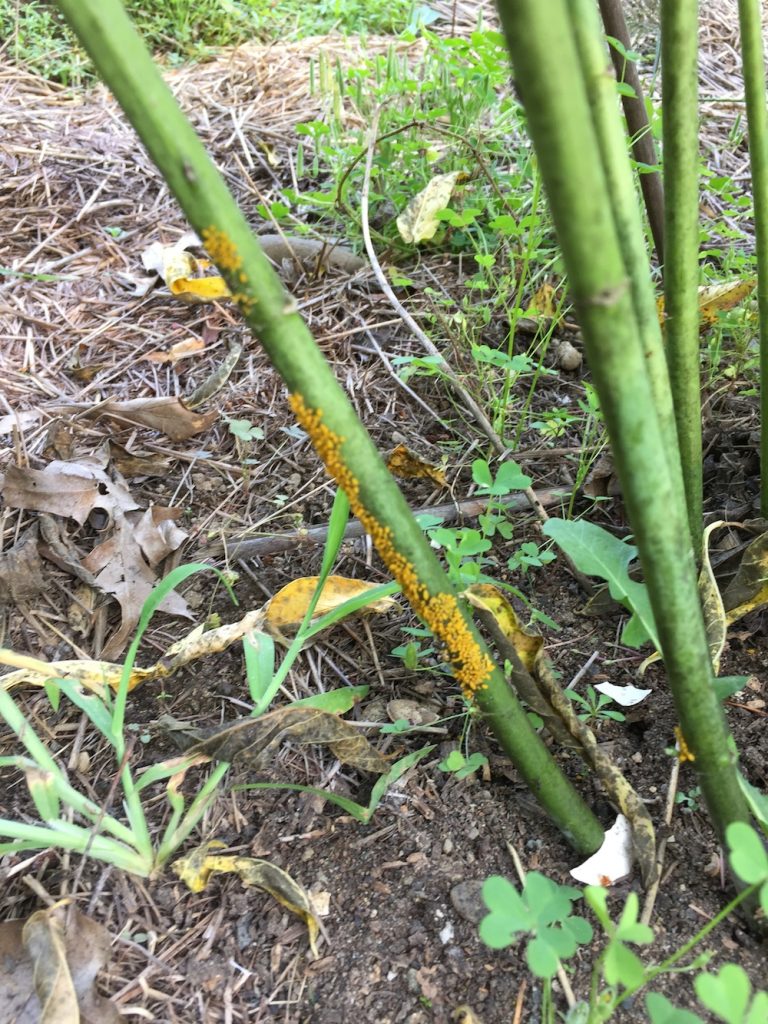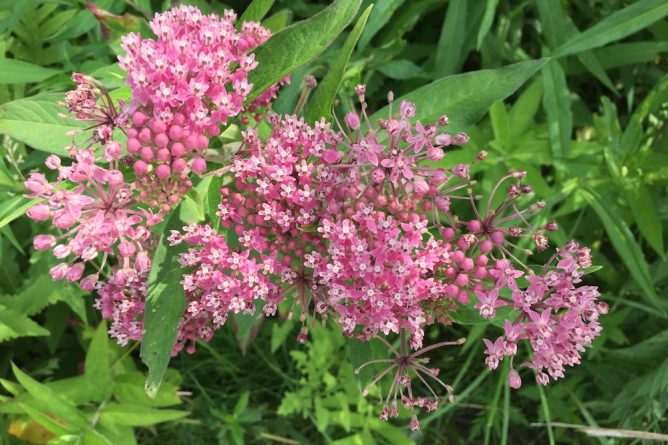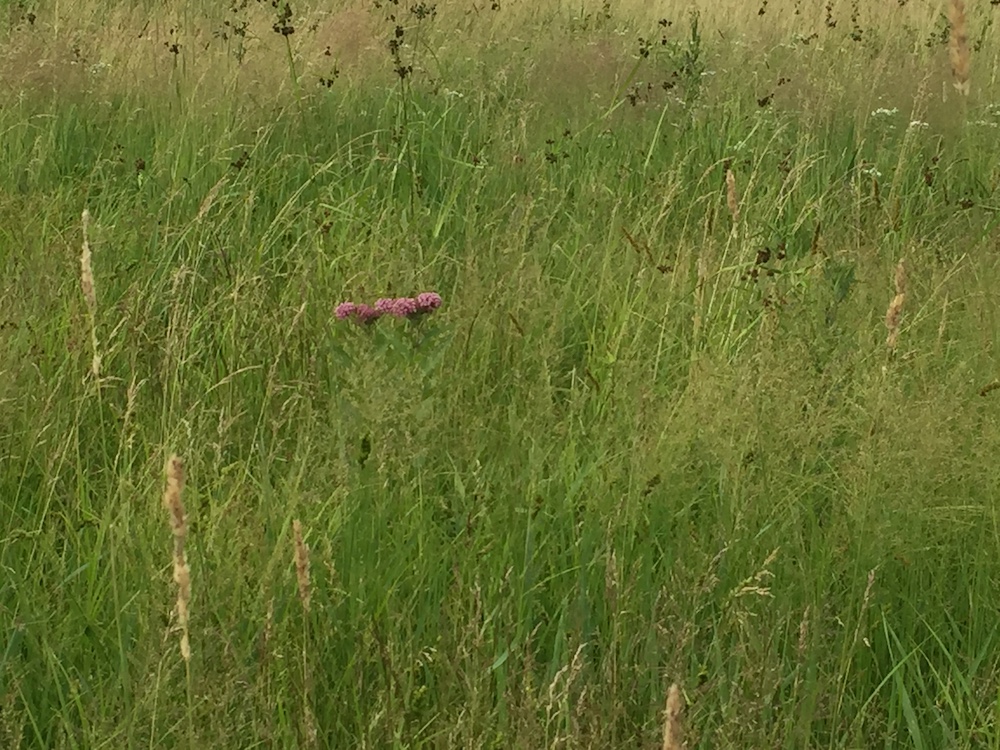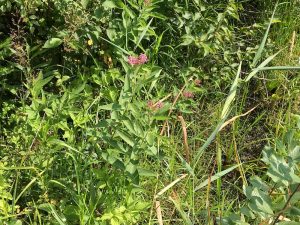So far this season I have been feeling deficient in my dye and fiber plant growing skills. Here’s a success story, at least thus far (knock on wood).
The swamp milkweed was not faring well in the dye and fiber plant garden at Bramble Hill Farm. As I have noted in earlier posts, that site is not a swamp. It is a dry, wind-swept, hilltop garden spot. I kept felt guilty that I could not successfully fend off the yellow aphids on the swamp milkweeds plants in that location. I finally decided that the plants were experiencing an overall undue level of stress which was making them vulnerable to attack. The responsible thing would be to move them to a wetter spot. So I did.
Here is what one of the plants looks like at Bramble Hill on April 21, 2019:
It was still dormant, so I figured it was OK to dig it up and move it. In the photo above you can see the fibrous tendrils that are still attached to the outer papery skin on a couple of the stalks. Below you can see the same plant but from a little higher up. This is what I sometimes think of as the “nothing to see here” vantage point. Mostly it’s the dandelion that stands out:
The resources I’ve consulted recommend moving milkweed plants either in the fall when the plants are dormant, or in the early spring. I have had good luck moving swamp milkweed before so I was pretty confident it would work. A. incarnata has a wide network of roots, but the plant doesn’t form colonies with long runners like common milkweed does, so it’s easier to be sure that you’ve dug up the whole root system.
Here is what the emerging shoots of another A. incarnata plant looked like on April 21st. They are the small buds with a pinkish-purplish tinge:
Here is the mucky site I was moving them to:
It is the designated mud-play area of our school garden at the Common School. A drainage culvert empties out underneath that wooden platform to the right of the photo, hence the additional water in that part of the garden. Since we have had such a rainy spring, it was still very puddly and wet at the end of April and early May.
Here’s what it looked like once I had dug over a “bed” next to the fence:
The black plastic was left over from our initial lawn-smothering process when we expanded that area of the garden in 2016.
Here is a plant emerging happily on May 10th:
And on May 26th:
As of yesterday, June 17th, the plants were lush and happy:
It has continued to be a wet and cool spring, which is suiting them just fine:
It remains to be seen if they will bloom this year. I have read that milkweed plants may forego flowering if they are stressed after transplanting. Whatever happens this summer, and in seasons to come, I hope they will be happier in their new watery home.

